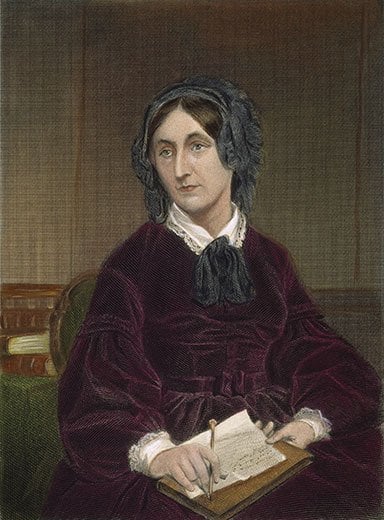Mary Putnam Jacobi, MD (1842-1906): The menstruation myth

Mary Putnam Jacobi was interested in biology from the time she was young, and even briefly considered dissecting a dead rat she found to get a glimpse at its heart.
With the reluctant support of her father, renowned publisher George Putnam, Jacobi received her MD degree from the Female (later Woman’s) Medical College of Pennsylvania in 1864. Determined to get a better education than she could in the United States, she also managed to study at l’École de Médecine in Paris — the first woman to ever do so.
Jacobi fought hard for her female peers. She argued for coeducation for medical students, noting that existing women’s medical schools could not provide the same clinical experience as major hospitals. In 1872, she created the Association for the Advancement of the Medical Education of Women to address inequities.
Over the course of her career, Jacobi taught and wrote prolifically about such topics as pediatrics, pathology, and neurology, and she was the first woman accepted into the New York Academy of Medicine. But perhaps her most outstanding contribution was debunking myths about menstruation.
In response to a book by a Harvard professor that argued exertion — including study — during menstruation was dangerous, Jacobi laid out an incisive counterargument proving the stability of women’s strength throughout their cycle. Her paper — brimming with detailed facts, charts, and numbers — won Harvard’s prestigious Boylston Prize and was a powerful tool in women’s fight for better education.
Mary Somerville (1780 – 1872)

Intrigued by the x’s and y’s in the answer to a math question in a ladies’ fashion magazine, 14-year-old Mary Fairfax of Scotland delved into the study of algebra and mathematics, defying her father’s injunction against such pursuits. Her studies were sidetracked by a marriage, in 1804, to a Russian Navy captain, but after his death she returned to Edinburgh and became involved in intellectual circles, associating with people such as the writer Sir Walter Scott and the scientist John Playfair, and resumed her studies in math and science. Her next husband, William Somerville, whom she wed in 1812, supported these efforts, and after they moved to London, Mary became host to her own intellectual circle, which included the astronomer John Herschel and the inventor Charles Babbage. She began experimenting on magnetism and produced a series of writings on astronomy, chemistry, physics and mathematics. She translated astronomer Pierre-Simon Laplace’s The Mechanism of the Heavens into English, and although she was unsatisfied with the result, it was used as a textbook for much of the next century. Somerville was one of the first two women, along with Caroline Herschel, to be named honorary members of the Royal Astronomical Society.
